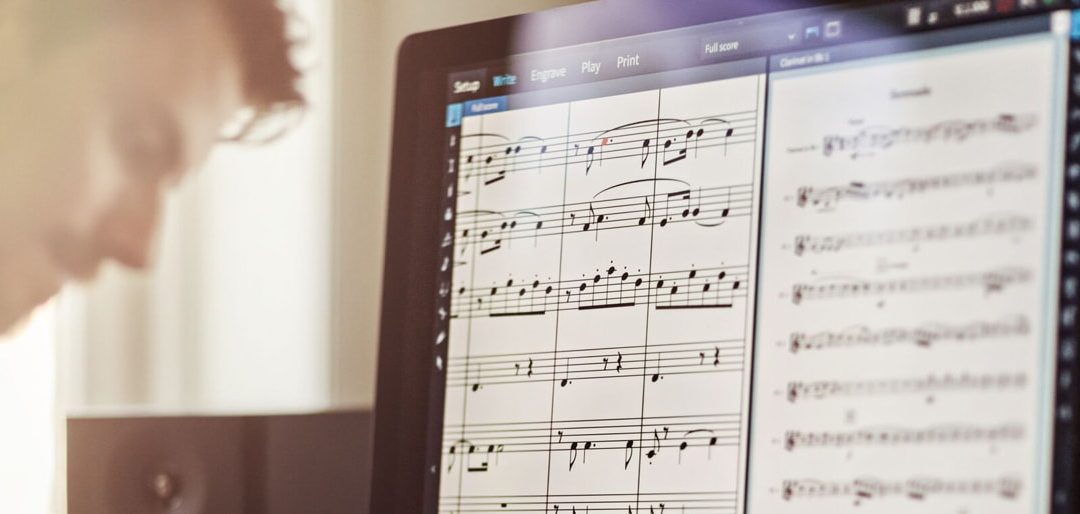When we first began developing Dorico, we were fully aware that a great portion of our potential users would already have longstanding relationships with other software. If you’ve been a Finale user for twenty years and have created some of your proudest work using the program, the siren call of a new software may feel strangely intrusive.
Why Dorico deserves a closer look
But Dorico isn’t a new, flash-in-the-pan program trying to lure you away with meaningless bells and whistles. It’s the culmination of decades of experience in the music notation software industry, a deep connection with musical principles and a respectful understanding of hundreds of years of traditional engraving conventions.
Dorico isn’t about repackaging and updating something you already have to make it look a bit slicker. Instead, we’ve fundamentally remodeled how Dorico thinks about music, creating a program which as different from traditional music scoring software as digital is from analogue.
Dorico thinks about music the same way that you do
At the heart of Dorico’s difference is the way in which we’ve designed the software. When we set out to build Dorico, we started from scratch – while older programs can only release minor updates or new versions adding only modest new functionality, we had the opportunity to take knowledge and experience gained over decades-long careers in the industry and construct Dorico on fresh foundations. We set out to build a brand-new tool, free from the legacy of old code, which was fit for today’s purposes, not the purposes of fifteen or twenty years ago.
The classic conundrum music software programmers face is resolving the conflict between how a computer represents music on the page, and how a human will interpret that representation. With Dorico, we have resolved this problem better than any other music scoring software. Dorico’s advanced musical AI thinks about music in terms of how we humans experience it when listening, rather than simply thinking about its layout in terms of notation. When we hear music, we don’t necessarily experience every notated aspect of it, so Dorico’s underlying representation is of streams of notes in time. Dorico’s AI then takes that abstract data and makes it concrete in a way which is true to the composer’s original intention.
Dorico offers superior flexibility
This new way of interpreting music allows Dorico to provide the user with multiple flexible tools for editing their music and developing their musical ideas – indeed, Dorico is the only music notation software which allows users to compose straight into the software without the need for constant adjustments. Dorico acts as an experienced music copyist working alongside you as you score, running under the surface as you create to ensure that all your ideas are visually represented in a way which musicians will be able to quickly understand. Dorico is also the only professional scoring program that can show you a piano roll view and notation at the same time, as you would see in a sequencer – allowing you to make edits that feel very natural with that kind of representation, but wouldn’t in another format.
This also enables you to use Dorico’s vast library of sounds to create fully realised recordings, without compromising your score. Typically, you’d need to tweak the score to get your virtual instruments to sound good, but this dual representation allows you to edit in a way which allows the computer to play its virtual instruments properly – while still giving a human musician what they need to understand the composer’s original intention in the conventional way.
Dorico was created with the user’s needs in mind
Have you ever visited an estate agent on the hunt for a new house and specified you want a two-bedroom new-build close to public transport, only to be shown a crumbling one-bedroom flat in the middle of an industrial estate? This is what happens when a business tries to bend its customer’s needs to its own offerings, rather than the other way around.
Our team has over 100 years of cumulative experience in the industry and our Product Marketing Manager, Daniel Spreadbury, has spent his career immersed in customers’ needs – he started out in the technical support department at Sibelius, and he’s maintained this closeness with the end-user throughout his 20-year career. Dorico was developed with a thorough understanding of the requirements people working in the modern music industry have, and we set out to design technological solutions to those real problems – rather than forcing our own ideas into the software. We really understand how real people use our program and what they need.
We didn’t decide to design Dorico to create a slicker version of Sibelius, or a more user-friendly version of Finale. We set out to develop an entirely different approach to translating music into notation. It was a necessary refresh which allows Dorico to offer superior functionality at unsurpassed quality – and in a few years, the best musical scoring software will be trying to remodel their programs based on our approach.
Dorico has been a project of pure musical passion, and we’re so proud of what we’ve achieved that we offer every user the option of a fully functional, no-card, no-commitment free 30-day trial. Try us today to experience Dorico’s impressive capabilities for yourself.

